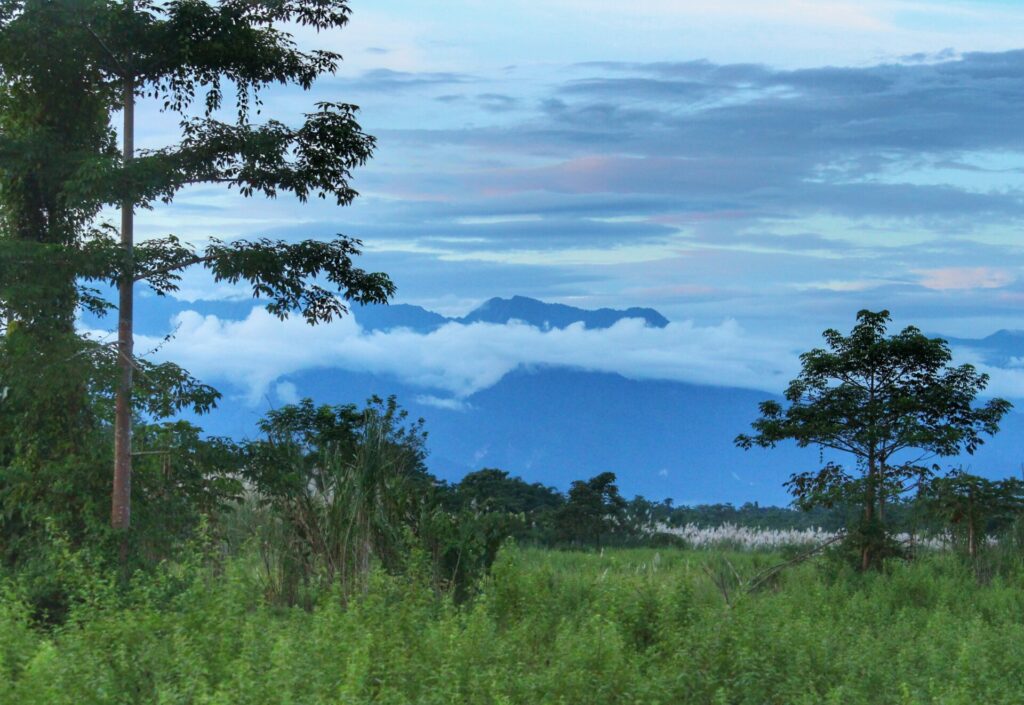In the lush forests and rolling grasslands of the Brahmaputra Valley, WLT has been working with Wildlife Trust of India (WTI) since 2019 to create a safe passage for India’s largest population of Asian Elephant (Elephas maximus).
Through our Plant a Tree programme, WLT and WTI have worked together with the Adi and Mishing people of the region to protect and restore the D’ering-Dibru Saikhowa Corridor and create freedom of movement for more than 500 Asian Elephant. Lying between the foothills of the Himalayas and the banks of the vast Brahmaputra River, the valley’s dappled floodplain is a hotspot for biodiversity, but more than 85% of it has been taken over by farming. This has left wildlife such as Asian Elephant, Bengal Tiger (Panthera tigris), Leopard (Panthera pardus fusca), and herds of Wild Water Buffalo (Bubalus arnee) cut off from the land they once roamed freely across. With the region’s forests paying the price for the agricultural shift, Plant a Tree supporters have now helped restore 150 ha of forest land.
The D’ering-Dibru Saikhowa Corridor will create freedom of movement for more than 500 Asian Elephant. Credit: WTI
110,082 new trees
Thanks to the commitment and enthusiasm of the nearby villages, our restoration targets for the current project, set out in 2021, have been achieved even quicker than hoped for, with an incredible 110,082 trees now planted. These trees have been diligently watched over and cared for by people working from the villages, who have cleared the young forests of three invasive tree species and protected the saplings from grazing damage by hungry cattle. Their efforts have paid off — across the 150 ha, most saplings have grown over 6 feet tall, with some plants even reaching 15 feet in height, and WTI are confident that the forest will flourish.
Having nurtured the saplings in the tree nursery, WTI has now planted 110,082 young trees out in the corridor. Credit: WTI
Mer, Paglam, and Namsing
Tree-planting to restore these lush forests is only one part of the plan, as Plant a Tree has come together with wonderful additional grant funding from a company supporter. With these funds, WTI was able to embark on a much wider project, helping to create over 1,400 ha of Community Conserved Areas with the people of Mer, Paglam, and Namsing villages. These areas will see the local people leading the protection of the land as well as receiving the benefits of a thriving ecosystem. Community-based conservation plans have also been created to help local people coexist with the extraordinary wildlife that shares the Brahmaputra Valley. One such initiative is the construction of fences, powered sustainably by solar energy, to encourage elephant herds away from easily trampled crops. In Paglam, the completed fences have been hugely beneficial to over 30 families who previously were unable to grow food without the risk of their crops being flattened by giant hooves and plans are now being made to roll out fencing to many other areas at the request of villagers.
Community-based conservation methods help the people of the valley’s villages to manage the wildlife alongside their homes. Credit: WTI
Footprints through the wetlands
While the trees grow and the crops ripen, how do we know how all of these successes impact the main visitors of the D’ering-Dibru Saikhowa Corridor — the roaming herds of elephant? The answer is again in the continuing commitment of WTI, the staff, rangers, and community volunteers. Across the entire project area, twelve neighboring villages outside of it, and the many islands that rise out of the surrounding wetlands, WTI carries out seasonal surveys to track elephant movements. Tracked through footprints, pathways of flattened grasses, and even dung piles, Elephant were confirmed to have been very active in the restored corridor throughout 2023, especially in December’s drier weather. During the surveys, WTI found that Elephants weren’t the only ones to benefit from the conservation efforts. Hidden camera trap footage showed an array of other wildlife is slowly returning to the area from Leopard to the Indochinese Rhesus Macaque (Macaca mulatta), while bird surveys recorded 70 species, including the Critically Endangered Slender-billed Vulture (Gyps tenuirostris).
A forest is so much more than the sum of its trees, and each element of our Plant a Tree project combines to create a sustainable pathway for people and wildlife to coexist into the future.

